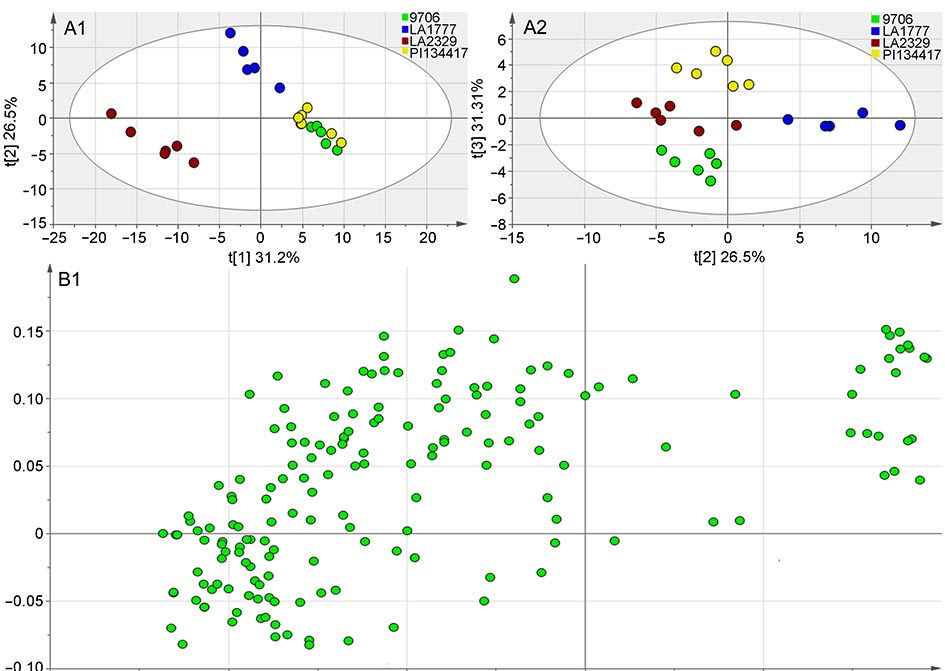多毛番茄(Solanum habrochaites)为重要的番茄种质资源, 其叶表存在大量次生代谢物质, 对多种虫害具有趋避或/和毒害作用。利用气相色谱-质谱联用(GC-MS)技术分析栽培番茄(S. lycopersicum ) 9706与3份多毛番茄(LA2329、LA1777和PI134417)材料叶表次生代谢物质。结果表明, 3份多毛番茄叶表可检测到的次生代谢物质种类和总含量均高于普通番茄, 同时多毛番茄亚种间次生代谢物质的种类和含量也存在差异。普通番茄叶表次生代谢物质为3种单萜和3种倍半萜类物质, 其中单萜和倍半萜类物质分别占次生代谢物质总量的60.3%和39.7%。多毛番茄LA2329和LA1777叶表倍半萜类物质的种类和含量较高, 有些萜类物质具有物种特异性。如LA2329中含量最高的α-姜烯, 其含量为2 409.1 μg·g–1; LA1777中含量较高的γ-榄香烯和E-β-法尼烯, 含量分别为573.3 μg·g–1和289.9 μg·g–1, 在其它番茄材料中未检测到这3种倍半萜类物质。PI134417中含量最高的是月桂酸乙酯, 其含量为5 312.8 μg·g–1, 在普通番茄中这一物质未见报道。PI134417中甲基酮类物质含量也较高, 其中2-十一烷酮和2-十三烷酮的含量分别为689.8 μg·g–1和1 459.7 μg·g–1。研究结果可为番茄种质资源利用和次生代谢物质开发提供理论依据。
Solanum habrochaites, an important tomato germplasm resource, is resistant to multiple insect pests and produces an array of secondary metabolites on the leaf surface. We used gas chromatography-mass spectrometry (GC-MS) to determine the secondary metabolites on the leaf surface of 4 tomato accessions: one S. lycopersicum 9706 and 3 S. habrochaites accessions LA1777, LA2329 and PI134417. The 3 S. habrochaites accessions produced high amounts of secondary metabolites, whereas S. lycopersicum 9706 lacked most of these secondary metabolites. Secondary metabolites on the 9706 leaf surface were 6 terpenoids, which included 3 monoterpenes and 3 sesquiterpenes, of 60.3% and 39.7%, respectively. LA2329 and LA1777 accumulated high amounts of sesquiterpenoids, but the types of sesquiterpenes differed between accessions. α-zingiberene was the most abundant sesquiterpene (2 409.1 μg·g–1) in LA2329. γ-Elemene and E-β-farnesene were the major sesquiterpenes in LA1777: 573.3 and 289.9 μg·g–1, respectively. Dodecanoic acid ethenyl ester, at 5 312.8 μg·g–1, was the most abundant secondary metabolite in PI134417. This metabolite has not previously been reported in any tomato species. In addition, methyl ketones, specifically 2-undecanone and 2-tridecanone, at 689.8 and 1 459.7 μg·g–1, respectively, were abundant secondary metabolites in PI134417. Our study provides the theoretical basis for the use of tomato germplasm resources and the development of secondary metabolites.




